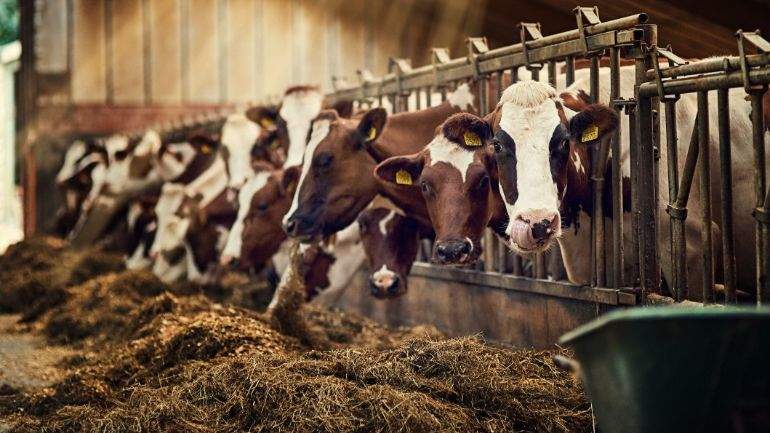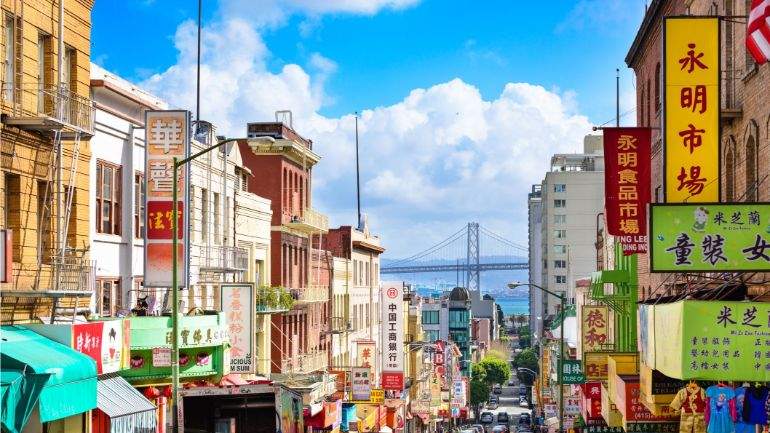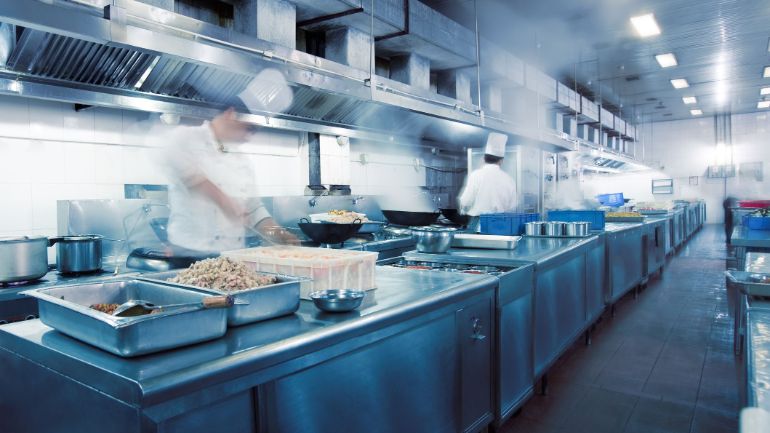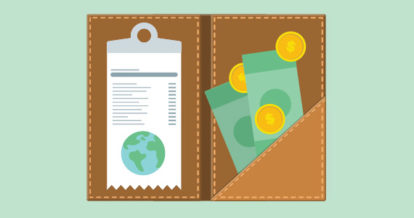From agriculture production and transportation to emissions generated by daily restaurant operations, the restaurant industry makes a significant impact on the environment.
Let’s look at the state of California, specifically. California is one of the most environmentally progressive states in the U.S. With frequent fires and droughts, California is also affected by climate change more than its neighbors.
In response, a group of California restaurateurs have started an initiative to combat the restaurant industry’s carbon footprint. Their plan, known as Restore California, is a surcharge that raises funds to subsidize renewable farming practices in the state.
We’re sharing the scoop on what the surcharge is and isn’t, while providing context on the restaurant industry’s impact on climate change.
In this article you’ll learn:
- How the restaurant industry contributes to climate change
- What the new California climate surcharge is
- How the California restaurant tax combats climate change
- Which restaurants in California are implementing the climate change surcharge
- Pros and cons of implementing the voluntary restaurant surcharge
- How to reduce your restaurant’s carbon footprint

The Role of Restaurants in Climate Change
It’s no secret the restaurant industry is a major contributor to climate change. The food production and service industries are responsible for up to 30% of the world’s greenhouse gas emissions. And with consumers spending half of their food budget at restaurants, the demand for dining out isn’t going anywhere.
Over half of emissions released into the atmosphere by the restaurant industry come from raising and processing livestock. While livestock production is responsible for creating significantly more greenhouse gases than plant production, not all meats are created equal. Beef is the biggest agricultural threat to our environment.
Beef production creates almost four times more greenhouse gas emissions than the second most harmful meat to produce, pork. Global beef production releases as much greenhouse gas emissions into our atmosphere as the entire country of India.
Because beef production requires 20 times more land to produce (and releases 20 times more emissions than plant-based protein), it also contributes significantly to deforestation.
Beef consumption in the United States is second only to that of poultry. The average American consumes almost 26 pounds of beef each year. Beef consumption has been on the decline due to raised public awareness about beef’s contribution to climate change. However, consumption would have to decrease much more drastically in order for beef production to plummet to a level that would significantly decrease its contribution to climate change.
What Is the California Restaurant Surcharge?
Concerned restaurateurs in California are taking action to reverse the negative impacts of unsustainable farming through the Restore California Renewable Restaurant program.
The initiative has already received many nicknames including the “California restaurant tax” and the “California climate change surcharge.” “Tax” is a misnomer because the surcharge is optional.
Restaurants in California have the option to add a 1% surcharge to their diners’ checks. The surcharge would go towards subsidizing renewable farming practices in the state.
The surcharge is optional both for restaurants and diners. Restaurants in California can opt in to the program. Even if a restaurant opts in and charges customers the 1% surcharge on top of their final check, customers can choose not to pay the additional fee.
Anthony Myint is the founder of the Restore California initiative and owner of San Francisco’s Mission Chinese Food restaurant. Mission Chinese Food already charges its customers a 3% “CO2 Offset” fee. Myint told USA Today that although his customers have the option to opt-out of the surcharge, none have.
What Does the Restore California Surcharge Fund Do?
The goal of the Restore California initiative is to close “the economic loop between producers and consumers, creating a renewable food system,” according to the program’s website.
The funds raised by the surcharge will be collected by the California Air Resources Board and would create the Healthy Soil Carbon Fund to subsidize renewable farming practices. California farmers would receive $10 for each ton of carbon they remove from the atmosphere through carbon farming.
What Is Carbon Farming?
Carbon farming is a farming method that allows carbon produced to be absorbed into the soil, instead of put into the atmosphere. These farming methods help reverse the effects of climate change.
According to Dr. Rattan Lal, a soil scientist at Ohio State University, “a mere 2% increase in the carbon content of the planet’s soils could offset 100% of all greenhouse gas emissions going into the atmosphere.”
Renewable farming practices replace harmful practices, like heavy plowing and the use of chemical fertilizers with techniques like crop rotation and grazing.

Which Restaurants in California Are Opting into the Climate Change Surcharge?
Restore California officially launches in the fall of 2019. Founder Anthony Myint explained in an email that his goal is to have 100 restaurants commit to collecting the 1% surcharge in time for the launch.
There are currently 15 restaurants in California committed to offsetting their carbon footprint through ZeroFoodprint, a global climate-oriented initiative pioneered by Myint. Those restaurants include:
- Mission Chinese Food – San Francisco
- benu – San Francisco
- Monsieur Benjamin – San Francisco
- in situ – San Francisco
- Lord Stanley – San Francisco
- flour + water – San Francisco
- State Bird Provisions – San Francisco
- The Progress – San Francisco
- Namu Gaji – San Francisco
- Cala – San Francisco
- Mikkeller Bar – San Francisco and Los Angeles locations
- Creator – San Francisco
- Foxsister – San Francisco
So what would a 1% surcharge look like in practice? For a $25 restaurant check, the 1% surcharge would amount to 25 cents, while a $100 tab would get an additional $1 added. The surcharge seems insignificant when put in context, but can make a big difference in reversing the effects of climate change.
According to Restore California, if 1% of restaurants in California implemented the 1% surcharge, the fund would raise $10 million for renewable farming practices. If all of the restaurants in California implemented the surcharge, the budget would be closer to $1 billion.
Pros and Cons of the Restore California Surcharge
The Restore California Renewable Restaurant surcharge is optional for restaurants to implement and optional for customers to pay if the restaurant chooses to implement it.
Are you on the fence about asking customers to pay an extra 1% on top of their check?
Here are the pros and cons of implementing the Restore California surcharge.
Pros
Here are some reasons why restaurants in California should implement the Restore California surcharge:
- You’ll be playing a part in reversing climate change. By helping to make sustainable farming possible, you’re making the restaurant industry more sustainable, and therefore contributing to the longevity of your business and others like it.
- You’ll attract customers who care for the environment. Restaurants in California that pledge to participate in the healthy soil surcharge will be more appealing to customers who want a role in reversing climate change. Restaurants that have a mission tend to attract like-minded customers.
- There’s nothing to lose. Even if you choose to implement the Restore California surcharge, customers who don’t agree with it can opt-out of paying it. Customers who opt out still gain awareness about sustainable farming practices that they may not have known about before!
Cons
Here are some reasons why California restaurants may not want to adopt the 1% climate change surcharge:
- The surcharge could upset customers. Customers may be fed up with fees in other areas of their lives and don’t want more unexpected costs while they’re dining out. Telling customers about the surcharge in advance will help keep them from being caught off guard. You can explain what the surcharge is and ask customers if they want to opt into it before the check comes out.
- It’s money that your business could be getting. Some restaurateurs in California may wonder, “if you can ask your customers to pay more for the same meal, why wouldn’t you just charge more for the meal?” As a hardworking business owner, you may prefer to see that money in your pocket than in the hands of farmers.

I’m Not in California. How Can I Help?
You don’t have to be in California to make an impact on reversing climate change at your restaurant. Here are some ways you can contribute to making the restaurant industry more sustainable:
- Use less red meat. As you read above, beef contributes much more greenhouse gasses to the environment than poultry and seafood. See if you can reduce the red meat options on your menu. While a burger is a staple for many restaurants, you could substitute this for a turkey burger or chicken patty.
- Buy local and organic ingredients. It takes half as much energy to produce organic food than it does to produce conventionally grown and raised produce and livestock. When you buy ingredients locally, you reduce the distance that the food traveled to your restaurant, and therefore reduce greenhouse gas emissions created by transportation.
- Switch to efficient appliances. Replacing your restaurant’s appliances with ENERGY STAR appliances will reduce your utility bills and carbon footprint. Switching to an efficient refrigerator can reduce your energy use by 30%.
- Audit your energy and water use. If you don’t want to completely replace your appliances, conduct an audit of how your restaurant uses energy and water and then make a plan to reduce consumption. Does your staff turn appliances off when they’re not in use? Is your back-of-house staff keeping refrigerator doors open too long? Even small behavioral changes can make a big impact over time.
It’s no secret that the restaurant industry makes a huge contribution to climate change. The Restore California restaurant surcharge aims to offset carbon emissions by charging a 1% fee to diners to subsidize sustainable farming practices. But whether your area has a surcharge or not, you can still make changes to help in the efforts against climate change.
Free job application template for restaurants







